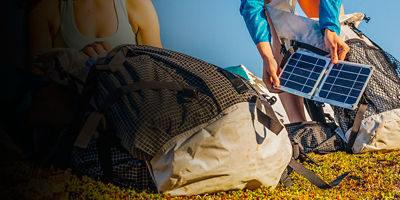
Just make sure you’re going in the right place. Pooping, peeing, menstruating: Do your thing. Do it the right way, though, as a few best practices will keep your camp setting clean, serene, and hygienic for your group and others to follow—plus minimize the environmental effects of the worst kind of waste that’s always a factor on any multi-day trip. Be prepared for the next trail or camp bowel emergency with this guide to bathroom etiquette in the outdoors.
Pooping, Part I: In Outdoor Toilets
DO: Be prepared
Even if you’re expecting your campground or a trailhead to have toilets (check websites/call ahead for information), you’ll never know the last time they were stocked. Stash some emergency toilet paper in your vehicle before you take off, just in case you reach a stall with empty rolls. Bring hand sanitizer, too, for afterward.
DON’T: Just poop anywhere
There’s no way else to say it: Human poop is bad for the environment. It takes about a year to biodegrade and, in addition to fouling trails and campsites, if it's left too close to streams or watersheds, it contaminates groundwater. Studies show human waste is a major cause of the increased prevalence of giardia in wilderness groundwater. Poop responsibly (more details below).
DO: Use toilets
If you see an outhouse or toilet (or know one is coming up soon), use the infrastructure, even if it’s smelly—this helps reduce the impact of humans in the outdoors. There are several types of outdoor toilets. The most common, a pit toilet or latrine, collects human feces (and pee) in a hole in the ground that is routinely removed. Other outhouses have composting toilets—these will require you to pour some sawdust or sand (typically provided at the bathroom) on top of your excrement to minimize odor and help with the decomposition process. Port-a-potties exist outdoors, too; use them as intended. [Text Wrapping Break]
DON’T: Use pit toilets for trash
Use trash cans for trash. Only put toilet paper down pit or composting toilets. That means no wet wipes, no menstrual products, no litter from your snacks, no food scraps—just toilet paper. Trash is extremely hard to remove from outdoor toilets and interferes with the disposal/decomposition process.
DON’T: Steal toilet paper
It takes a lot of work (and funds) to restock campground and trailhead johns. If you’ll need toilet paper out in the field, pack your own—don’t take it from public stalls.
Pooping, Part II: Outdoors Without a Toilet
DO: Follow LNT Principle 3: “Dispose of waste properly”
Thanks to the Leave No Trace Center for Outdoor Ethics, disposal of human waste in the backcountry isn’t rocket science. If no latrines are available, you’ll have to bury your own poop.
DO: Find a good location, away from water sources
That is at least 200 feet (70 adult steps) away from a water source, trail, or campsite. Choose a space that receives a lot of sunlight, has deep organic soil, and is away from obvious water drainages. According to LNT, this will maximize decomposition while keeping feces out of water sources.
DO: Dig a good “cathole”
Dig a 6- to 8-inch hole into which you will poop. To dig the hole, use a trowel—a small, lightweight shovel. If you don’t have a trowel, get creative with a stick or a rock to ensure your feces is buried underground.
DON’T: Leave your toilet paper out
Drop your used toilet paper into the cathole, too; don’t just leave it wherever you pop a squat. It takes weeks for toilet paper to decompose in the most moist conditions—in arid places, it’s even longer. No one wants to see the remnants of your dirty work!
DO: Cover your excrement
After you’re done, pile dirt on top of your poop and toilet paper to expedite the decomposition process and prevent animals (or other campers) from stumbling into or across your feces. Bonus points: Before covering, use a stick to stir a “poop soup,” which will speed up the decomposition rate.
DON’T: Use scented or colored toilet paper
In general, use toilet paper sparingly, and use only plain, white, non-perfumed brands that will minimize interference with the environment if you bury it inside the cathole. Better yet, pack the TP out in a waste or zip-top bag, which is a requirement in many areas, and is always a necessity for wet wipes or menstrual products.
DO: Consider natural toilet paper
When done correctly, using stones, vegetation, and even snow can be as sanitary as regular toilet paper, but without the impact problems. Collect smooth river rocks or seek out clean leaves for wiping purposes before you do your business.
DO: Wipe
One of the most effective ways to prevent the spread of pathogenic (disease-causing) bacteria is to wipe thoroughly and wash your hands after you poop. It’s worth repeating: Don’t forgo wiping outside just because you don’t want to deal with your dirty toilet paper.
DO: Spread out catholes
If you’re camping in the area for more than one night, or if you’re with a large group, your cathole sites should be widely dispersed. That’ll avoid concentrating human feces in one area.
DON’T: Bury your poop in the alpine, fragile desert environments, and popular backcountry areas
If you need to poop above treeline, in a sensitive arid zone like a canyon system or water-starved desert, at a climbing crag or popular lake shore: Pack out your poop. Use some variation of a “wag bag,” which is a reinforced, sealable plastic bag that you poop into, then carry out to dispose of in a trash can. Most wag bags come with toilet paper, a wet wipe, and a desiccant that will reduce moisture and help eliminate odor.























